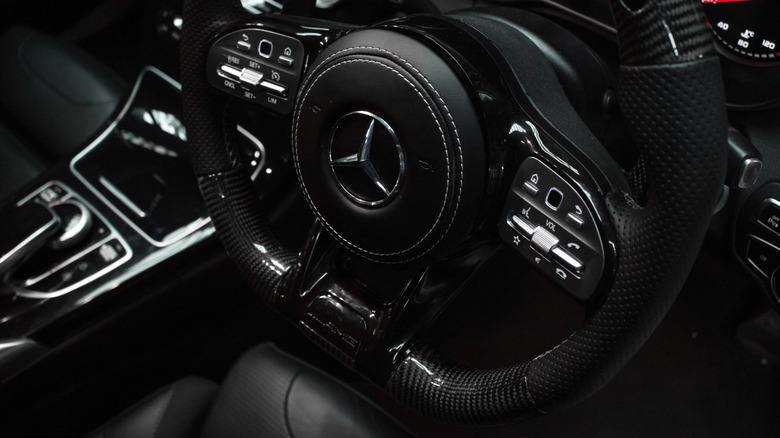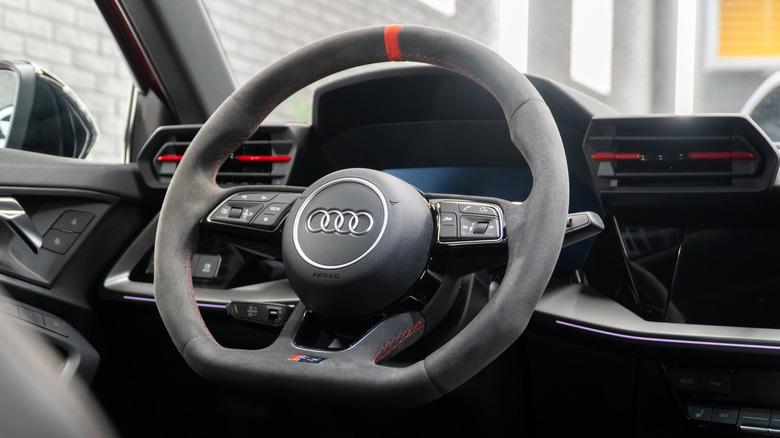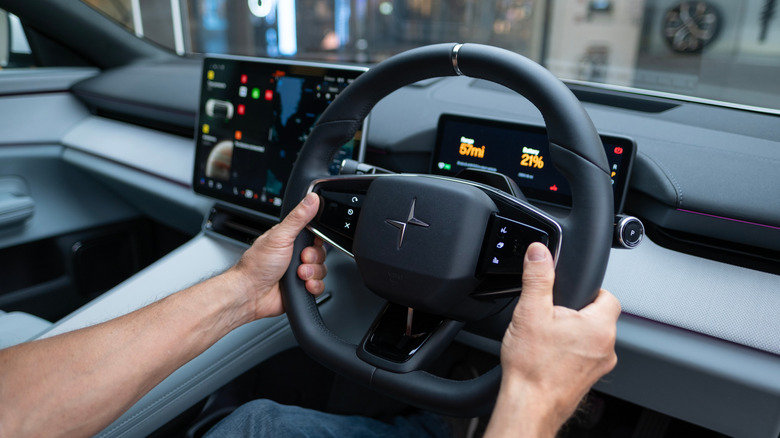Why Do Some Steering Wheels Have A Flat Bottom?
Flat-bottom steering wheels — you have most likely seen them in sporty coupes, supercars, or even some electric vehicles, but their function and purpose may still remain a mystery. Although this design decision seems like a stylistic flourish, there is more involved than just aesthetics. Originally a motorsport invention to make more space in tiny cabins, these unique and cool steering wheels have gradually crept into mainstream cars for a combination of purposes.
Legroom is one of the main advantages. Particularly taller drivers, especially those with lower seating positions or tighter cabins, often find it simpler to slide in and out of cars fitted with flat-bottom wheels. The little additional space at the base of the wheel can make getting in and out of the car rather more pleasant.
One cannot overlook the sporty appeal, though. Even in vehicles not especially designed for the track, a flat-bottom wheel is a clear expression of performance. It echoes the racing roots from which the design sprang and points to a sense of accuracy and control. Therefore, manufacturers sometimes include them in sport-oriented models or special trim packages to support that performance-first branding, even if the driving dynamics stay basically unaltered.
What difference do they make?
Flat-bottom steering wheels have practical benefits during spirited driving beyond their initial wow factor and additional space. Without looking down, the flat edge provides a tactile cue to help drivers orient the steering wheel. When performing a quick maneuver or aggressive cornering, where every millisecond counts, this can be a helpful addition. This is why racing steering wheels use the flat-bottom design and steering-wheel stripe; this orientation advantage is rather important and might make all the difference between winning and spinning out.
Certain drivers also assert that the design helps with grip and posture. The flat section gently encourages hands to remain on the top half of the wheel, where control is more exact and ergonomics are better, because the flat part naturally rests at the bottom. Although for your typical daily commuter, this might not be a game-changer, for those who enjoy driving, this little improvement can add up.
Fascinatingly, the trend also reaches high-end luxury and electric cars, where performance is not always the first concern. Flat-bottom wheels have been used as a design statement by companies drawn by their visual appeal and futuristic or high-tech vibe. Consumers these days are asking for flat-bottom designs less, so for comfort and more as a statement.
Why are they not for everyone?
Flat-bottom steering wheels are not always appreciated, even with their subtle advantages. Some critics contend that the design throws off the natural circular feel of a conventional steering wheel, which can be confusing or uncomfortable on tight turns. Driving aficionados have noted that the advantages could be more psychological than practical unless you are regularly entering and leaving a small cabin or doing significant track time.
Making a flat-bottom wheel may also be more costly, as it calls for a different mold and possibly more costly materials for manufacturers, especially when combined with luxury extras like leather wrapping, paddle shifters, or heating elements. This is why flat-bottomed wheels are generally only seen on expensive vehicles, as it provides the sense of exclusivity and sportiness that comes with a premium price.
Still, the appeal of flat-bottom steering wheels seems unaffected by slowing down trends. These wheels have carved out their own little niche, whether it comes to form, function, or just flaunting a sporty edge. For drivers, it's a small but significant decision that combines ergonomic improvements, racing legacy, and a bit of flair.


